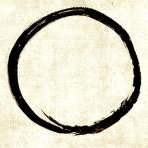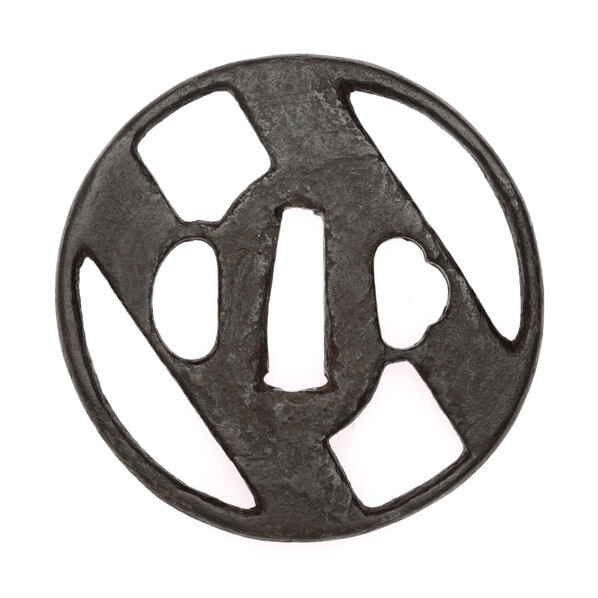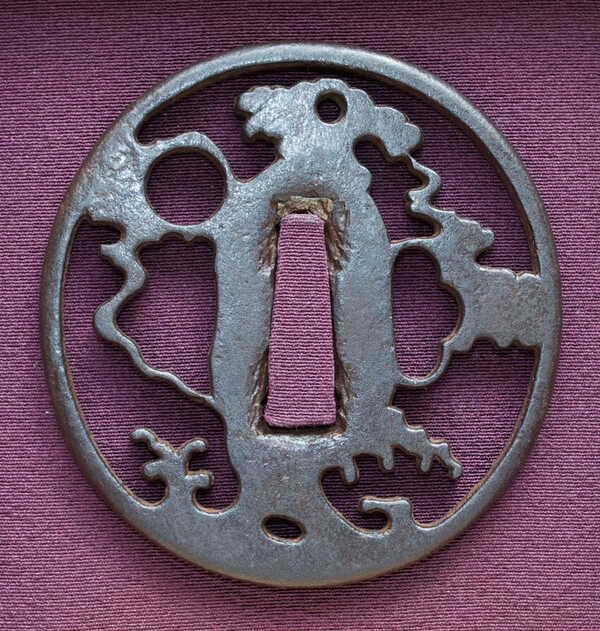-
Posts
380 -
Joined
-
Last visited
-
Days Won
1
Content Type
Profiles
Forums
Events
Store
Downloads
Gallery
Everything posted by FlorianB
-
Snow on Bamboo is correct. Obviously a middle to late Edo Tosho-style Tsuba, but a nice design. Here’s something similar on a wakizashi-sized Tsuba of mine: Concerning the spot: The origin is impossible to tell by picture. Take it as it is. I remember removing glue remnants from a Tsuba - the glue had gone, but the patina below the glue was not the same, so I saw the spot anyway... Best, Florian
-
I remember my research on a somewhat unusual myoga. Although I suppose You have tried myoga already, there is a very similar design with apricot or gyoyo 杏葉 . Maybe this will be fruitful . Best, Florian
-
Hello Peter, a little gem indeed! But what a difference good pictures make comparing to the original images from the website: I suppose that's the reason it hasn't sold earlier… Best, Florian
-
A small contribution of mine, another Nishigaki (although humble in comparision with above), moon on the left, dewdrop or star in the pine at the top. Florian
-
Colin, I won’t adhere too strichtly to reality. Many objects have been conventionalized i.e. depicted birds = karigane, and fog ( 霞 kasumi ) on Akasaka Tsuba, too. Here’s a contemporary icon of cloud and fog: Akasaka design was ahead of the times! Florian
-
Hello Colin, Akasaka and late Muromachi? To my mind the Akasaka were founded in early Edo-period, even with the mystic Kariganeya Hikobei at it start it would be late Momoyama at the earliest. Furthermore Your work looks not like Ko-Akasaka but a later generation. So it would be safe to place it into Genroku or middle Edo-Period. However, a wonderful piece! I often wonder, why the angles of the mist are different and not continuous horizontal… Best, Florian
-
Hi Colin, concerning Your question if it is a net or not, I can’t imagine any connection to a fishing net. Kyo Sukashi often produced a regular, grid-like design. Yours is a typical specimen from early Edo period. Like it a lot! Florian
-
Peter, the hototogisu is connected with the summer season in which heavy rainfalls are common. Furthermore there could also be an allusion to the Ise Monogatari. In chapter 43 the cocoo symbolizes infidelity in love. Best, Florian
-
Hi Damon, interesting Tsuba. Any measures? In my eyes the seppa dai looks extraodinary large. Have You tried how a saya-mouth would fit? I suppose, the particular cutouts are just an adaption to a regular saya. Best, Florian
-
The same old question if the term "karigane" means wildgeese exclusively or is a generic term for birds. Certainly geese are strongly connected with the samurai but in several cases the depiction is a question of interpretation. Florian
-
...another one from the Ashmolean (http://jameelcentre....ction/8/object/21271): Tightly knotted! Best, Florian
-
Steve, what an interesting interpretation, thanks for the explanation! That proves again the worth of the NMB. On Kyo-Tsuba with motifs like bridges or yatsuhashi those karigane are a part of the scenery, so I doubt they’re kamon, but there are other Tsuba on which they represent obviously crests. I wonder if musubi karigane came into fashion for some time… Thanks, Florian
-
Gentlemen, we all know simplified karigane composed of a double curve with a dent in between. But sometimes knotted geese (musubi karigane) are depicted on Tsuba. Here’s an example out of Sasano Sensei’s book: Does anybody know the reason for this peculiar design? Thanks, Florian
-
Not sure about it, but it looks like former inlays have fallen out - or never set in... Best, Florian
-
-
Nashiji (pear skin pattern) just refers to the small structure (not the wavy one). The generic term for those surface patterns is ishime (stone surface). Castle wall seems plausible, imagine You look over the wall into the moat. Best Florian
-
...just seen at Aoi Art, attributed to Higo Hayashi: https://www.aoijapan...hinbthk-hozon-paper/ Best, Florian
-
Nice little one! Dimensions? In my view it looks like a worn strawhat (kasa). Best, Florian
-
I can see Your point that Your tsuba appears to look old. But for example the treatment of the surface is a sophistication clearly made in later times. Maybe there could be a connection with the wabi-sabi-taste. As David pointed out the Tsuba was produced in Edo-Period. The Ko-Shoami works date back to Muromachi- and Momoyama-times. (Ko-)Shoami is not a school but mere an style produced in and around Kyoto as mentioned. Later Shoami tsubako founded numerous schools all about Japan. For further information have a look here: www.shibuiswords.com/tsuba.htm#shoami Best, Florian
-
-
Not sure about the rim (a little bit fuzzy), but in the inner structure there are some areas which look laminated. So Akasaka seems possible. Your second Tsuba shows pines, a branch (probably plum if I see the carved blossom correct) and two blossoms. The wavy hitsu-ana represent snow or snowflakes. Same problem like above: Akasaka or Higo - more detailed pictures needed to pin down the origin. In my opinion it looks rather like Higo because of the sophisticated style. But it should become obvious that "same design, same school" is a wrong conclusion. Alas it's more complicated... Florian
-
My first impression was later Akasaka, because of the design and the different sized hitsu-ana, but as said above Higo could also be a possibility. Here’s a similar Nishigaki of mine: Are there any signs of sanmai awase on the outer rim or inner sides? Florian
-
Glen, exactly this part at the edge looked sightly splintered so I thought of lacquer. Thanks for clearing up! Concerning the time: Although that’s not out of question I want to remind that the lack of signs of wear at the nakago-ana or the seppa-dai not necessarily hint to Meiji or more recent periods, because since the 18th century Tsuba have been bought as gifts, souvenirs or collectibles without the intention of using them. Best, Florian
-
Hi, difficult to tell, if the nunome belongs to an originaI concept or was added later. Here we have a later piece which shows some „mannerism“, in my eyes a touch to much. Concerning the time a hint could be the niku, the concave or convex surface. If a Tsuba shows naka-daka, i.e. disc-shape (thicker in the middle, thinner at the rim) it is not earlier than Edo-period. Best, Florian
-
Hi Vitaly, I think all these Tsuba have been made during the Edo-period. It seems to me that the second Tsuba is lacquered. Such a rough lacquer structure was popular in the latter Edo-times. Here’s an example: That’s the reason it has a fukurin, a separate ring for stabilization. The Kamon-Tsuba shows some cloudy parts on the surface around the inlays as if someone polished those and abraded the patina, too. Gold needs no polish so I persume the inlays are made of brass (sentoku). The small ornaments are called karakusa or arabesque. The last one has nunome of gold and obviously lead. Can’t imagine the design but it seems intenionally worn out maybe to allude to transciency. Best, Florian














